Targeting the right audience is key to meeting your business and marketing objectives. Thorough audience research and analysis will help you both market to existing customers and reach new ones. Herein lies the value of using ‘custom audience’ lists on Google analytics, where you can either use preconfigured audiences or develop your own from scratch, discovered through analytical investigation. This is where data & analytics come together with paid search specialists to change the world.
1. Google pre-packaged audiences
Ease yourself into advanced targeting by using the audiences that Google has already managed for you. Choose from options such as: New Users, Returning Users, Users who visited a specific section of my site/app Users who completed a goal conversion, Users who completed a transaction (this is already configured to include any user with more than zero transactions). For Google’s full instructions, click here.
2. Creating your own custom audience
The first step to creating an audience for your marketing purposes is to collect and collate data around them. This is most effectively done by combining the best functions of Google Analytics and Google Tag Manager.
Google AdWords is the more simplified, original way to collect and utilise users’ behaviour analytics. AdWords tag audience options are very simple (E.g. Users who have visited URL “/xyz”). It works in a pinch, but the downside is that it’s limited in terms of the data it can collect and is therefore considered outdated.
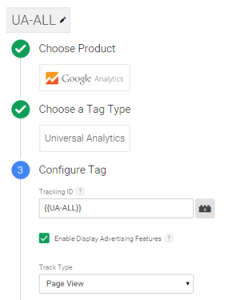
Roll on Google Tag Manager
Once you install Google Tag on your company’s websites, your audience potential explodes. The standard Google Analytics Page view tag includes the option to enable the collection of data for remarketing audiences in AdWords or DoubleClick.
Don’t have tag manager yet? Not to worry. Simply enable remarketing in your Google Analytics Property Settings, as demonstrated below:
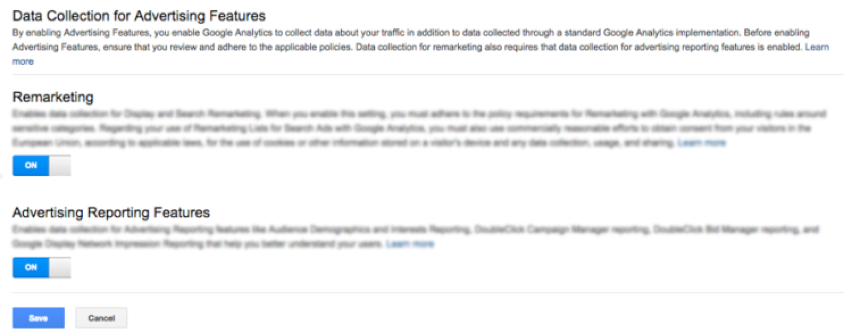
3. A juicy audience segment
It doesn’t get any better than this (in 2017). Create a ‘segmented audience’, based on isolated subjects of your data that can be as specific and narrow as you wish. This is ideal for marketing and testing.
For example, you could identify those ‘ghost shoppers’ who have serially place items in their shopping baskets but don’t follow through with their purchase. Those users are a perfect audience for a remarketing campaign as you can show them ads for discounts on the items in their basket or ads for free shipping, testing to what extent it prompts them to make their purchase.
How to create an audience segment: getting you started
- Open the view in your analytics account, that includes the segment you want to use
- Open Reports – you can start with any
- Click + Add Segment
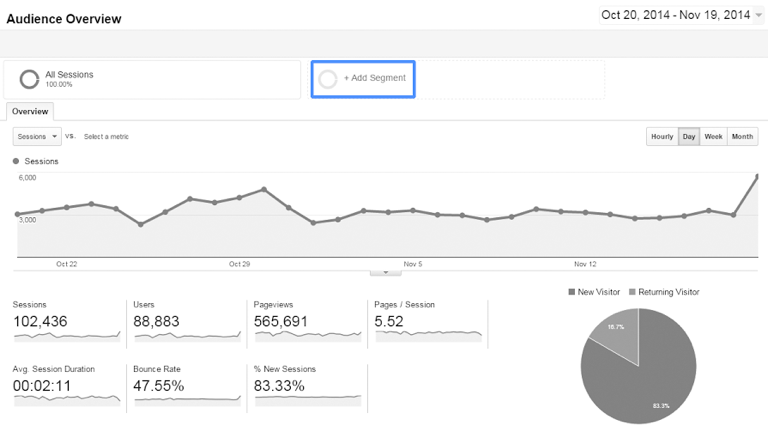
…open the segments list.
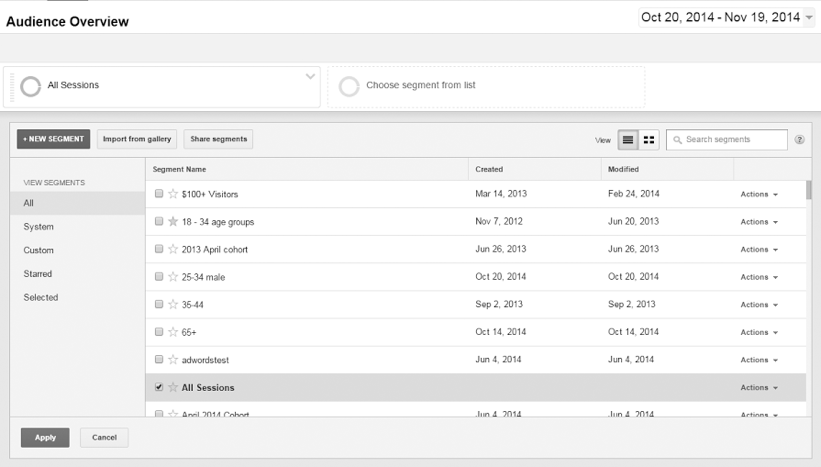
4. Find the segment you want as the basis for your audience (in this example, Sessions with Transactions).
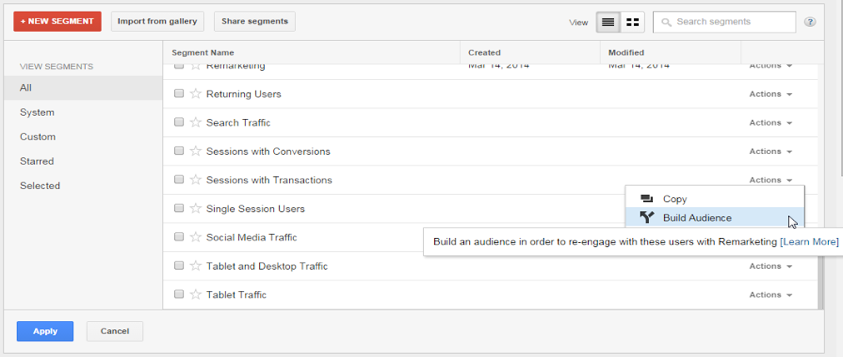
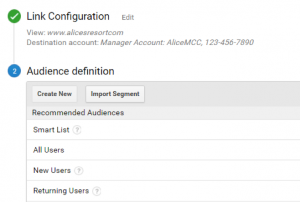
For a full break-down of instructions, go to Google’s instructions on how to segment your Google Analytics data.
Don’t forget to create audiences that you’ll need to exclude as well. For example, if you’re building an audience to drive general site users to a specific video, you could create separate list of users who have already viewed that video.
Once you’ve created a segment that you want to remarket to, you’ll need to turn the segment into an audience and share it with the correct AdWords account under the Property Settings inside of Google Analytics.
IMPORTANT! Make sure Google Analytics and Google AdWords are linked.
4. Taking your segmentation to the next level
Audience research is a balance between specificity and reach. You want your audience to be as targeted, personalised and as creepy as possible without being so narrow that you’re wasting money targeting two individuals who may have no interest. It’s a numbers game.
Users looking for different things will land on different sections of your site. A landing page represents the endpoint of a query someone has typed into a search engine. Therefore, a section of your site represents a distinct segment of users whom we can analyse and target.
Now we can dig deeper. Choose an audience segment, and head to the Audience > Interest reports in Google Analytics. In-market audiences and affinity audiences in the Google Analytics audience reports will literally tell you what people who visit your website are interested in and enable you to map their journey from low-interest to purchase-ready.
With this, you can build advanced segments based on exactly what people are looking for, and the interests by which to talk to them, and then port them into a custom audience list.
5. Targeting
Now it’s time to fire. Below are some tools and techniques for targeting to your custom audience:
- Remarketing Lists for Search Ads (RLSA) is a very useful Audience Prioritisation Tool. This lets you customise your search ads campaign for people who have previously visited your site, and tailor your bids and ads to these visitors when they’re on Google and search partner sites. Find out more about making the most of RLSA here.
- Targeting settings on your Display Network, unlike RLSA, triggers an ad only when someone who’s on your audience list searches for one of the keywords in your campaign. You need a big audience here, so your segmentation can’t be too granular, since no other traffic is being lured by a campaign using this setting.
6. Last but not least, is social advertising!
Apply the above tactic and display copy to different audiences. For example, on Facebook you can create a custom audience based on customer, website traffic, app activity, engagement and more.
Following these steps will help save your business time and money, by targeting relevant or interested audience segments. It may take some time and effort, but it’ll be worth every strain since it’ll enable you to optimise your spend and boost your revenue.


